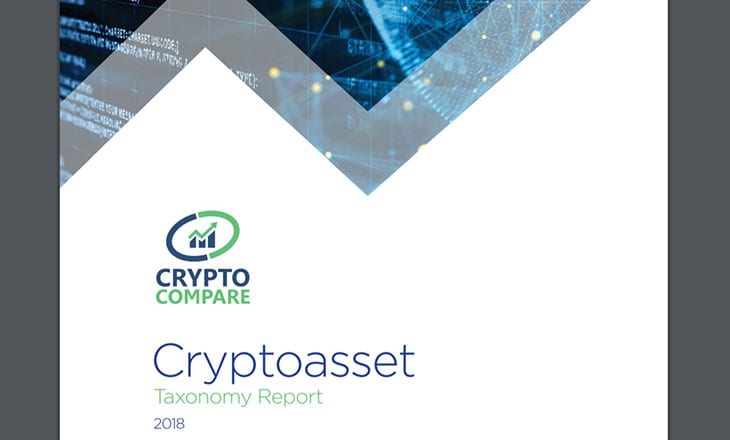CryptoCompare, the global cryptocurrency market data provider, has today published the ‘Cryptoasset Taxonomy Report’. The taxonomy provides retail and institutional investors, regulators and the industry as a whole with an independent classification of cryptoassets, based on the depth, breadth and scope of CryptoCompare’s global datasets.
More than 1,000 different cryptoassets have emerged in the last year alone. Each of these cryptoassets can be categorised and understood using numerous frameworks. There is a clear requirement for a unified approach on how to categorise these assets, to make well-informed investment decisions.
In line with CryptoCompare’s rigorous data standards, the taxonomy represents a detailed analysis of 200+ cryptoassets, based on more than 30 unique attributes, covering a range of economic, legal and technological features. CryptoCompare analysed the classification of cryptoassets from a variety of perspectives, including: existing natural cryptoasset groupings; regulatory classifications; access and governance; market cap and volume data; level of decentralisation; generation, distribution and supply concentration, to name but a few.
The taxonomy also offers a summary classification – the CryptoCompare Archetypes. This reflects what CryptoCompare considers the most natural grouping of cryptoassets at this moment in time.
Charles Hayter, CEO and Founder of CryptoCompare, said:
Daily, retail and institutional investment communities express an appetite to invest and develop investment products and instruments based on cryptoassets. Key to this is the demand for a single, independent and trustworthy taxonomy offering transparency, consistency and confidence.
He added:
Based on our deep understanding of the cryptocurrency space and the breadth and integrity of our data, we are confident that this taxonomy will help industry participants, as well as regulators, gain a better understanding of the cryptocurrency landscape. In this nascent but fast evolving industry, we aim to offer the clarity required to navigate the complex crypto markets, helping all investors benefit from our experience and insights, and make well informed investment decisions.
Simon Taylor, Founder of Global Digital Finance & Co-Founder 11:FS, commented:
Global Digital Finance (GDF) has worked directly with global policy makers and standards bodies, to help bring a clearer understanding of the opportunities and risks that arise from cryptoassets. It’s clear language is one of the key challenges, given a word can have many meanings to many different professions. Indeed the simple use of “currency” can cause concern when used instead of “payment”. By using the right terms, and by using shared language we can build a shared understanding of the significant potential cryptoassets will bring to the global economy. The work by CryptoCompare is the most detailed taxonomy to date and we look forward to future collaborations.
Jack Tatar, Managing Partner, Doyle Capital Management, explained:
The taxonomy that was defined in ‘Cryptoassets: The Innovative Investor’s Guide to Bitcoin and Beyond’ was intended to create a foundational basis for further study. CryptoCompare’s ‘Cryptoasset Taxonomy Report’ provides a step forward in defining this space through its thoughtful, detailed and exhaustive research that incorporates lessons learned and current thinking since the publication of our book. It’s heartening to see the hard work and effort undertaken to further define the taxonomy of cryptoassets and rewarding to recognise that bright minds are pursuing this topic. What’s been produced here is such a high-quality report that will allow others to build upon what’s provided here.
Gabor Gurbacs, Director, Digital Asset Strategy VanEck/MVIS, added:
VanEck’s MVIS is committed to supporting greater standardisation and transparency in digital asset taxonomy. The proposed taxonomy is transparent, follows industry classification standards and has incorporated views from a wide range of market participants, regulators and academics. We have worked closely with CryptoCompare, MVIS’ core partner in digital asset data and indexing, as well as GDF and wish to see this classification standard adopted widely.
Leon Marshall, lead author and senior adviser, concluded:
I’m incredibly proud of the bottom-up research that our team has undertaken for this taxonomy. As the cryptoasset space matures, I am confident that our taxonomy can be used both as an intellectual framework and as a foundation for additional research. In addition, I am also grateful to Chris Burniske, Felipe Pereira, Ari Paul, Thomas Linder, John Pfeffer, Eitan Jankelewitz, Michael Jackson, Simon Taylor, Jesse McWaters, Teana-Baker-Taylor, Eric Wall and Max Mersch for sharing their considered thoughts and time with us.
